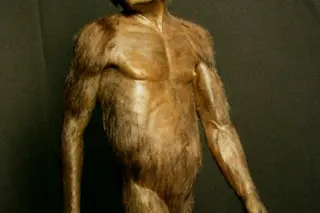3.18 million years ago, the member of Australopithecus afarensis better known as Lucy walked around what's now Ethiopia. But researchers still debate how she walked — and how much time she spent on the ground. (Image credit: Associated Press) Hey Lucy, you got some more explainin' to do. A controversial study published in August proposing that a fall from a tree killed Lucy, the world's most famous fossil, was just the opening salvo in a renewed debate. Researchers announced an even bigger breakthrough today: Analysis of micro-CT scans reveal Lucy was at home on the ground and in the trees, a finding that puts the team at odds with some of the field's biggest names. Researchers from Johns Hopkins University and the University of Texas Austin looked at cross sections of micro-CT scans of Lucy's upper and lower limb bones. The team compared the virtual slices with those of other ...
The Latest on Lucy: Early Hominin Spent Serious Time in Trees
Explore how the Australopithecus afarensis, Lucy, balanced life on the ground and in the trees from new micro-CT scans.
More on Discover
Stay Curious
SubscribeTo The Magazine
Save up to 40% off the cover price when you subscribe to Discover magazine.
Subscribe













